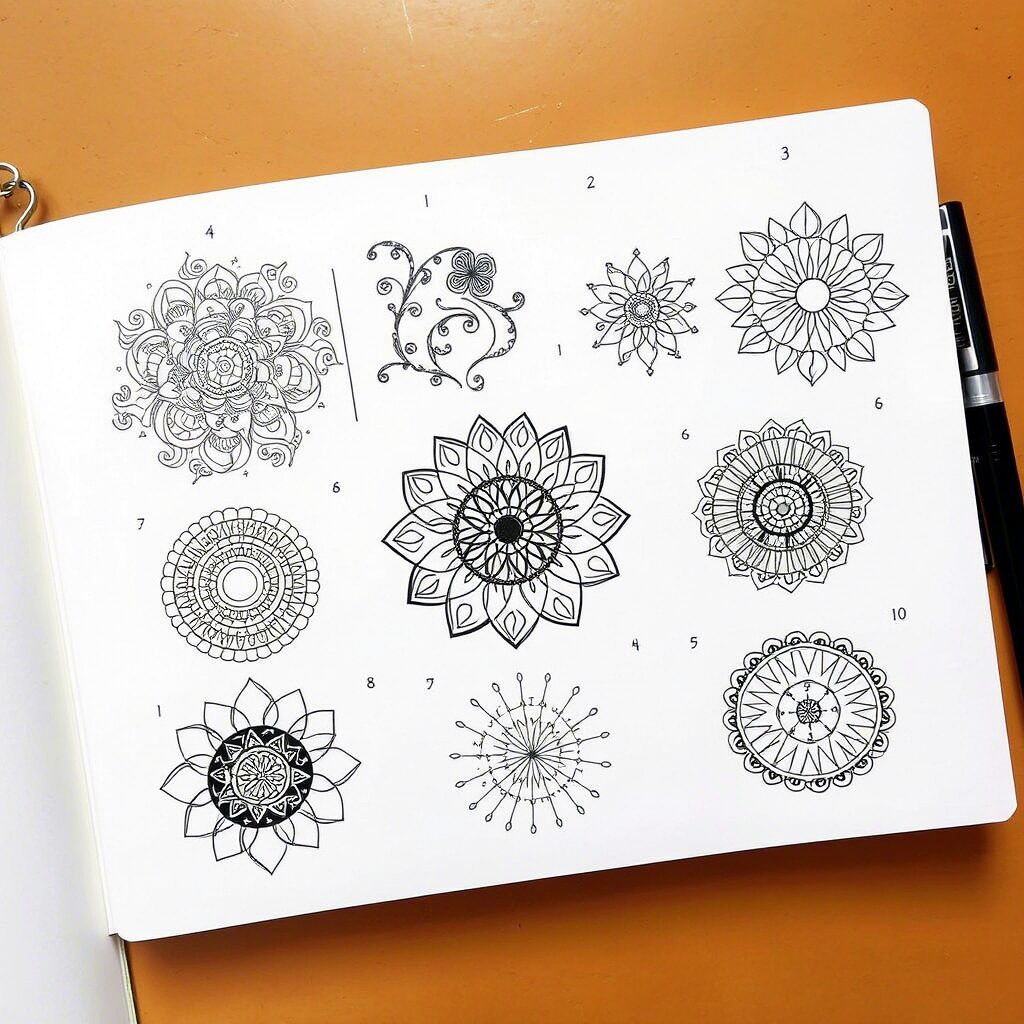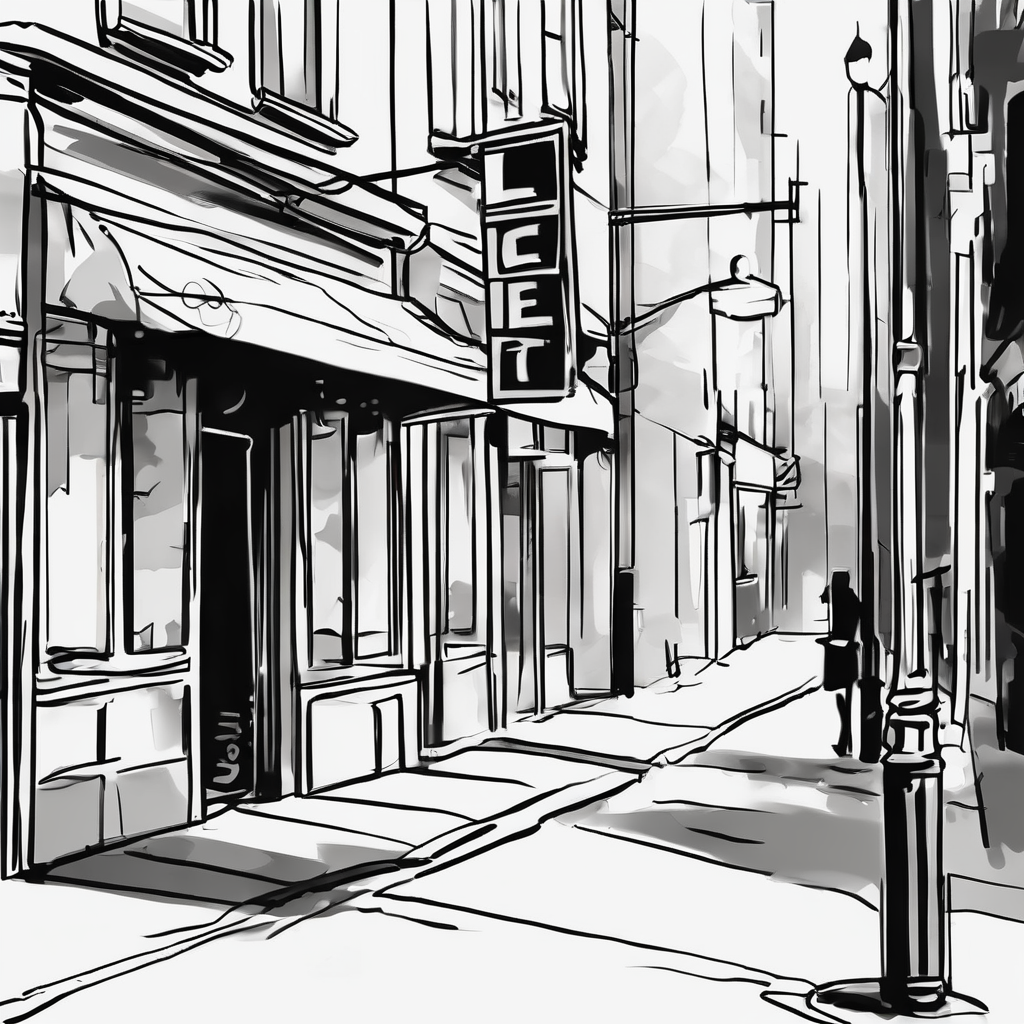In a world filled with constant digital distractions and endless to-do lists, creative doodling ideas offer a simple yet powerful escape. Doodling isn’t just idle scribbling—it’s a gateway to mindfulness, stress relief, and unexpected creative breakthroughs. Whether you’re stuck in a boring meeting or seeking a calming bedtime ritual, picking up a pen and allowing yourself to create without judgement can transform idle moments into meaningful artistic expression.
Key Points:
- Doodling reduces stress and anxiety through mindful focus
- Simple patterns can spark greater creative thinking
- Daily doodling practice builds artistic confidence
- No special supplies or artistic background needed
- Doodling improves concentration and information retention
- Creates a meditative “flow state” beneficial for mental health
What Makes Creative Doodling So Powerful?
Creative doodling ideas don’t require fancy art supplies or years of training—just a willingness to put pen to paper and explore. Unlike more structured art forms, doodling welcomes imperfection and celebrates spontaneity. This accessibility makes it perfect for anyone seeking a creative outlet without the pressure of creating a “masterpiece.”
Research suggests that doodling isn’t just enjoyable—it’s good for your brain. When you doodle, you engage in a form of visual journaling that helps process emotions, improve concentration, and enhance memory. A 2009 study published in Applied Cognitive Psychology found that people who doodled while listening to boring information recalled 29% more details than non-doodlers!
Simple Doodling Patterns for Beginners
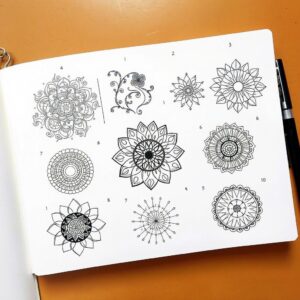
Starting your doodling journey doesn’t require complex techniques. Here are some easy patterns to try:
- Spirals and Swirls: Create simple spirals of varying sizes and directions. Let them flow into one another or stand alone.
- Grid Patterns: Draw a simple grid and fill each square with a different pattern—dots, lines, waves, or whatever comes to mind.
- Nature-Inspired Forms: Simple leaves, flowers, clouds, and raindrops can be combined into beautiful patterns.
- Geometric Shapes: Triangles, circles, and squares can be arranged and filled with simple patterns.
- Mandalas: Start with a center point and work outward in circular, symmetrical patterns.
Remember, there are no mistakes in doodling—only opportunities for creative adaptation!
Mindful Doodling for Stress Relief
Mindful doodling combines simple drawing with meditative awareness, creating a powerful tool for mental wellbeing. Unlike casual scribbling, mindful doodling involves bringing your full attention to the process—noticing the sensation of pen on paper, the flow of your hand, and the emerging patterns.
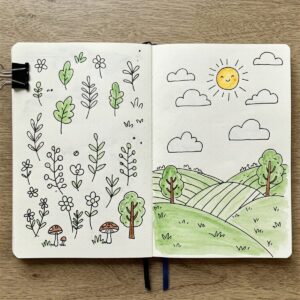
To practice mindful doodling:
- Find a quiet space free from distractions
- Take three deep breaths before beginning
- Draw slowly and deliberately
- When your mind wanders (it will!), gently bring attention back to your doodle
- Focus on the process rather than the outcome
Many people find that certain patterns are particularly soothing. Repetitive designs like waves, circles, or flowing lines can create a rhythmic, meditative state similar to what you might experience during formal mindfulness practices.
“Doodling is thinking in disguise—a visual form of processing that helps us solve problems and gain insights we might miss through logical thinking alone.”
Sunni Brown, author of “The Doodle Revolution”
Zentangle-Inspired Doodling Techniques
Zentangle® is a structured method of drawing that transforms simple strokes into beautiful, complex patterns. While formal Zentangle follows specific methods and terminology, you can borrow these principles for your creative doodling ideas:
| Zentangle Element | How to Use It |
|---|---|
| Tangles | Repeating patterns built with simple strokes |
| Strings | Curvy lines that divide your paper into sections |
| Tiles | Small squares of paper for contained doodles |
| Auras | Lines that echo and surround existing shapes |
| Fragments | Small units that can be repeated to create patterns |
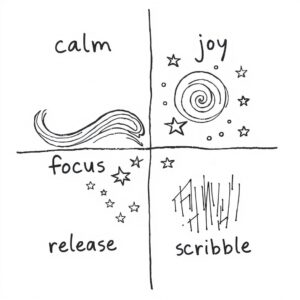
The beauty of zentangle-inspired doodling is how complex-looking results come from simple, repetitive strokes. Even beginners can create impressive designs by building patterns one line at a time.
For more information on authentic Zentangle practices, visit Zentangle.com.
Daily Doodling Prompts for Creativity
Establishing a daily doodling practice can build creativity muscles and provide a consistent outlet for stress relief. Using prompts can help overcome the intimidation of a blank page:
Weekly Doodling Challenge:
- Monday: Doodle your mood without using words
- Tuesday: Fill a page with only curved lines
- Wednesday: Create patterns inspired by something in nature
- Thursday: Doodle using only geometric shapes
- Friday: Create a doodle inspired by your favorite song
- Saturday: Draw interconnected bubbles and fill each with different patterns
- Sunday: Create a border doodle around a positive affirmation or quote
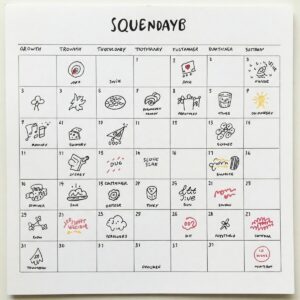
Consider starting a dedicated doodle journal to track your progress and creative evolution. Even five minutes a day can lead to noticeable improvements in your doodling skills and mental clarity.
Creative Doodling Ideas for Different Moods
Our emotional states greatly influence our creative expression. Try these doodling approaches based on your current mood:
For Anxiety or Stress:
- Flowing, curved lines that promote relaxation
- Repetitive patterns that create a sense of order
- Nature-inspired shapes like leaves or waves
For Low Energy or Sadness:
- Bright, radial patterns that expand outward
- Uplifting imagery like stars, suns, or flowers
- Bold, simple shapes that don’t require much concentration
For Scattered Thoughts:
- Structured grids or mandalas to promote focus
- Detailed, intricate patterns that require attention
- Labyrinth-like designs that guide your pen in a meditative journey
For Creative Blocks:
- Abstract scribbles transformed into recognizable shapes
- Random dot connections
- “Blind” doodling with eyes closed for part of the process
The beauty of mood doodling is that it can both reflect your current emotional state and help transform it. Many doodlers report shifting their mood through the process of drawing.
Supplies for Creative Doodling Success
While doodling requires minimal supplies, having the right tools can enhance your experience:

Basic Doodling Kit:
- Fine-point black pens (0.1mm to 0.5mm)
- Smooth paper or sketchbook
- Pencil for light guidelines (optional)
For Added Dimension:
- Gray markers or pens for shading
- White gel pen for highlights
- Colored fine-liners for accent colors
Many experienced doodlers recommend Sakura Pigma Micron pens for their consistent ink flow and archival quality.
How Doodling Enhances Learning and Focus
Despite its reputation as a distraction, doodling can actually improve focus and information retention. When our minds wander during passive activities like listening to lectures, doodling gives the restless part of our brain something to do while still allowing us to absorb information.
Doodling can help with:
- Active listening: Keeps your mind from daydreaming during lectures or meetings
- Problem-solving: Engages different parts of your brain to approach challenges creatively
- Memory retention: Creates visual connections to verbal information
- Processing emotions: Provides outlet for feelings that may be difficult to verbalize
- Generating ideas: Stimulates divergent thinking and unexpected connections
Next time you’re in a long meeting or class, try taking visual notes with simple doodles instead of just words—you might be surprised how much better you remember the content!
Integrating Doodling with Other Creative Practices
Creative doodling ideas can enhance and complement other artistic pursuits. Consider these combinations:
- Use doodles as borders for journal entries or bullet journals
- Create doodle backgrounds for calligraphy or hand lettering
- Design unique cards and gifts with personalized doodles
- Add doodled elements to watercolor paintings
- Create repeating patterns for textile or surface design
Many professional artists maintain doodling practices separate from their “serious” work as a way to stay loose and generate fresh ideas without pressure.
Here’s a relevant YouTube video about creative doodling techniques:
How to Doodle for Beginners | Easy Step-by-Step Guide
Creative Doodling Ideas: A Path to Artistic Confidence
One of the greatest gifts of creative doodling is the confidence it builds. Unlike more formal art forms, doodling has no rigid rules or expectations. This freedom creates a safe space to experiment, make “mistakes,” and discover your unique visual voice. Many people who claim they “can’t draw” find that regular doodling helps them overcome artistic inhibitions and develop genuine enjoyment of the creative process.
Remember that your doodles don’t need to impress anyone—they’re primarily for you. This personal connection to your creativity, free from external judgment, is what makes doodling so powerful as both a mindfulness practice and a stepping stone to other creative pursuits. So grab a pen, find a quiet moment, and let your hand wander across the page. Your mind—and your creativity—will thank you.
FAQ: Creative Doodling Ideas
What are the benefits of doodling?
Doodling reduces stress, improves focus and concentration, enhances memory retention, boosts creativity, and provides a mindful break from digital screens. It can also help process emotions and develop fine motor skills.
Can doodling improve creativity?
Yes! Doodling stimulates connections between different parts of the brain, promoting divergent thinking and novel solutions. The low-pressure nature of doodling allows ideas to flow more freely than in more structured creative activities.
How to start doodling as a hobby?
Begin with simple patterns like spirals, dots, and lines. Dedicate a small notebook specifically for doodling and carry it with you. Set aside 5-10 minutes daily for doodling practice. Use prompts if you’re stuck, and remember there’s no “wrong way” to doodle.
What’s the difference between zentangle and doodling?
Zentangle is a specific method with structured techniques, terminology, and certified teachers. It typically uses 3.5-inch square tiles and specific patterns called “tangles.” Regular doodling is more spontaneous and free-form, without formal rules or structures.
What doodling supplies do beginners need?
Beginners only need a pen and paper to start doodling! Fine-point black pens (like Microns or Fineliners) and smooth paper provide the best experience, but any writing implement and surface will work. Specialty supplies like white gel pens or gray markers can be added later.

